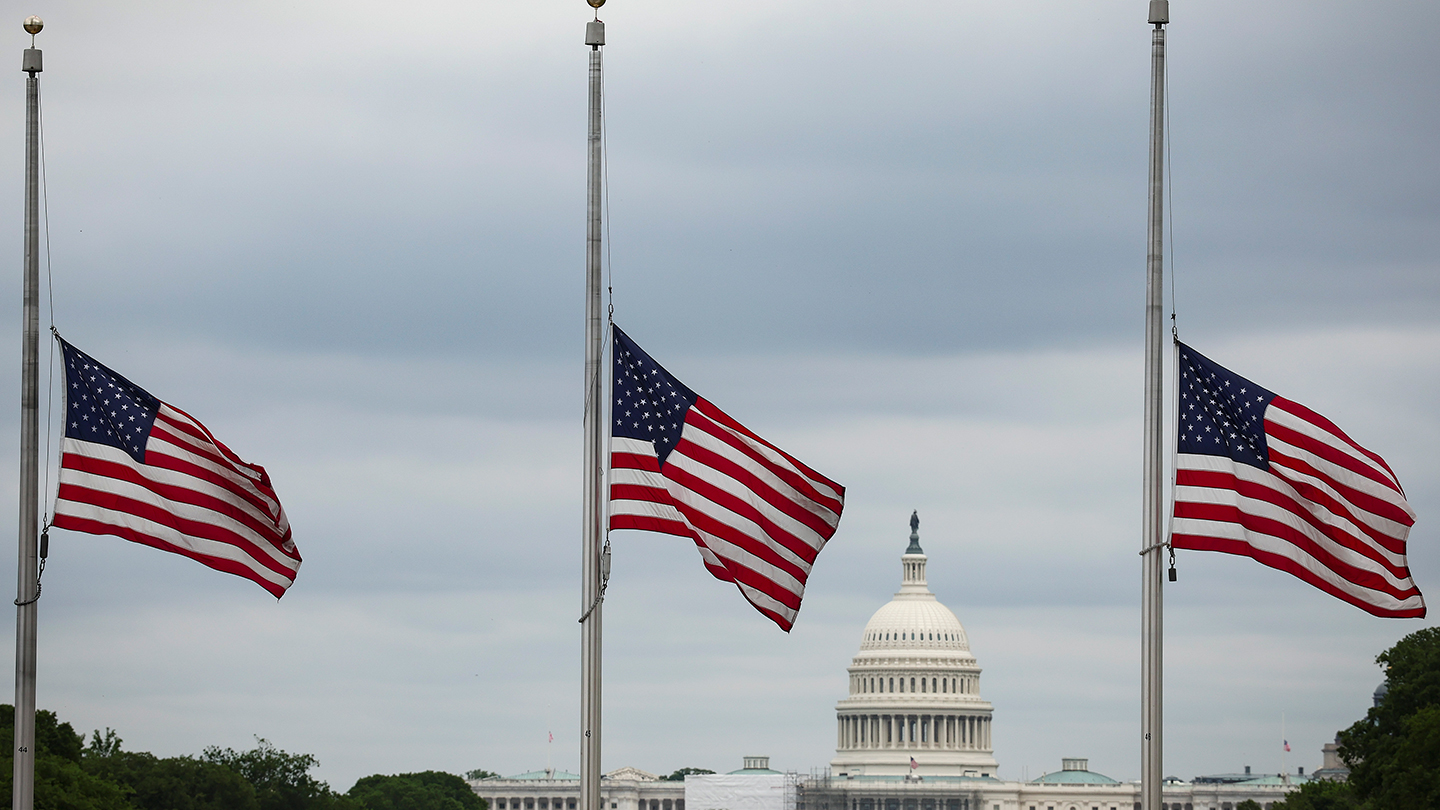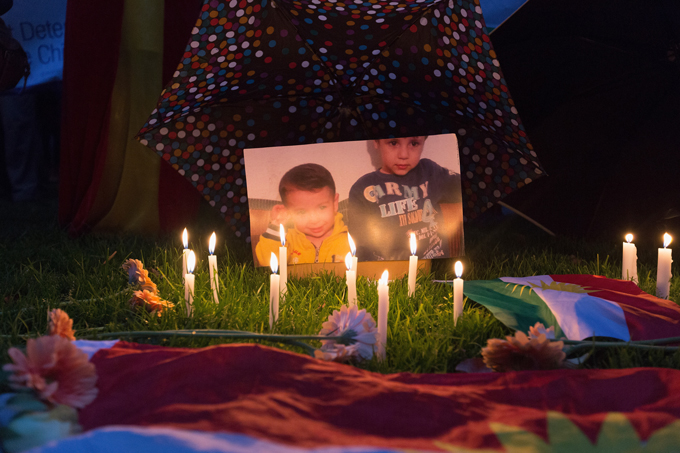COVID-19 has killed a million Americans. Our minds can’t comprehend that number
One million deaths. That is now roughly the toll of COVID-19 in the United Stat

One million deaths. That is now roughly the toll of COVID-19 in the United States. And that official milestone is almost certainly an undercount. The World Health Organization’s data suggest that this country hit a million deaths early in the year.
Whatever the precise dates and numbers, the crisis is enormous. The disease has taken the lives of more than 6 million people worldwide. Yet our minds cannot grasp such large numbers. Instead, as we go further out on a mental number line, our intuitive understanding of quantities, or number sense, gets fuzzier. Numbers simply start to feel big. Consequently, people’s emotions do not grow stronger as crises escalate. “The more who die, the less we care,” psychologists Paul Slovic and Daniel Västfjäll wrote in 2014.
Sign up for e-mail updates on the latest coronavirus news and research
But even as our brains struggle to grasp big numbers, the modern world is awash in such figures. Demographic information, funding for infrastructure and schools, taxes and national deficits are all calculated in the millions, billions and even trillions. So, too, are the human and financial losses from global crises, including the pandemic, war, famines and climate change. We clearly have a need to conceptualize big numbers. Unfortunately, the slow drumbeat of evolution means our brains have yet to catch up with the times.
Our brains think 5 or 6 is big.
Numbers start to feel big surprisingly fast, says educational neuroscientist Lindsey Hasak of Stanford University. “The brain seems to consider anything larger than five a large number.”
Other scientists peg that value at four. Regardless of the precise pivot from small to big, researchers agree that humans, along with fish, birds, nonhuman primates and other species, do remarkably well at identifying really, really small quantities. That’s because there’s no counting involved. Instead, we and other species quickly recognize these minute quantities through a process called “subitizing” — that is, we look and we immediately see how many.
“You see one apple, you see three apples, you would never mistake that. Many species can do this,” says cognitive scientist Rafael Núñez of the University of California, San Diego.
When the numbers exceed subitizing range — about four or five for humans in most cultures — species across the biological spectrum can still compare approximate quantities, says cognitive scientist Tyler Marghetis of the University of California, Merced.
Imagine a hungry fish eyeing two clumps of similarly sized algae. Because both of those options will make “awesome feasts,” Marghetis says, the fish doesn’t need to waste limited cognitive resources to differentiate between them. But now imagine that one clump contains 900 leaves and the other 1,200 leaves. “It would make evolutionary sense for the fish to try to make that approximate comparison,” Marghetis says.
Landy believes that as people transition from their lived experiences in the thousands to the more abstract world of 1 million, they reset their mental number lines. In other words, 1 million feels akin to one, 2 million to two and so on.
Changing our notations might prevent that reset, Landy says. “You might be better off writing ‘a thousand thousand’ than ‘1 million’ because that’s easier to compare to 900,000.” The British used to do this with what people in the U.S. now call a trillion, which they called a million million.
Without comprehension, extreme numbers foster apathy.
Our inability to grasp big numbers means that stories featuring a single victim, often a child, are more likely to grab our attention than a massive crisis — a phenomenon known as the identifiable victim effect.
For instance, on September 2, 2015, Aylan Kurdi, a 2-year-old refugee of the Syrian Civil War, was on a boat with his family crossing the Mediterranean Sea. Conservative estimates at the time put the war’s death toll at around 250,000 people. Kurdi’s family was trying to escape, but when their overcrowded boat capsized, the boy drowned, along with his brother and mother. The next day a picture of the infant lying dead on a Turkish beach hit the front pages of newspapers around the world.
No death up until that point had elicited public outcry. That photograph of a single innocent victim, however, proved a catalyst for action. Charitable contributions to the Swedish Red Cross, which had created a fund for Syrian refugees in August 2015, skyrocketed. In the week leading up to the photo’s appearance, daily donations averaged 30,000 Swedish krona, or roughly $3,000 today; in the week after the photo appeared, daily donations averaged 2 million Swedish krona, or roughly $198,500. Paul Slovic, of the University of Oregon, Eugene, Daniel Västfjäll, of Linköping University, Sweden, and colleagues reported those results in 2017 in Proceedings of the National Academy of Sciences.

Earlier research shows that charitable giving, essentially a proxy for compassion, decreases even when the number of victims goes from one to two. The flip side, however, is that psychologists and others can use humans’ tendency to latch onto iconic victims to reframe large tragedies, says Deborah Small, a psychologist at the University of Pennsylvania.
Some research suggests that this power of one need not focus on a single individual. For instance, when people were asked to make hypothetical donations to save 200,000 birds or a flock of 200,000 birds, people gave more money to the flock than the individual birds, researchers reported in the 2011 E-European Advances in Consumer Research.
Framing the current tragedy in terms of a single unit likewise makes sense, Västfjäll says. Many people react differently, he says, to hearing ‘1 million U.S. citizens dead of COVID’ vs. ‘1 million people, roughly the equivalent of the entire city of San José, Calif., have died from COVID.’
Milestones do still matter, even if we can’t feel them.
Kurdi’s photo sparked an outpouring of empathy. But six weeks after it was published, donations had dropped to prephoto levels — what Västfjäll calls “the half-life of empathy.”
That fade to apathy over time exemplifies a phenomenon known as hedonic adaptation, or humans’ ability to eventually adjust to any situation, no matter how dire. We see this adaptation with the pandemic, Small says. A virus that seemed terrifying in March 2020 now exists in the background. In the United States, masks have come off and people are again going out to dinner and attending large social events (SN: 5/17/22).
One of the things that can penetrate this apathy, however, is humans’ tendency to latch onto milestones — like 1 million dead from COVID-19, Landy says. “We have lots of experience with small quantities carrying emotional impact. They are meaningful in our lives. But in order to think about big numbers, we have to go to a more milestone frame of mind.” That’s because our minds have not caught up to this moment in time where big numbers are everywhere.
And even if we cannot feel that 1 million milestone, or mourn the more than 6 million dead worldwide, the fact that we even have the language for numbers beyond just 4 or 5 is a feat of human imagination, Marghetis says. “Maybe we are not having an emotional response to [that number], but at least we can call it out. That’s an amazing power that language gives us.”




